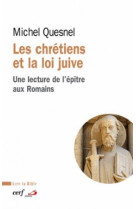Le premier manuscrit du livre d'hénoch
Michaël langlois
Véritable chef-d'oeuvre de la littérature apocalyptique, le Livre d'Hénoch est un trésor pour tous ceux qui étudient le judaïsme et le christianisme anciens. Riche en révélations sur le jugement divin, les anges, ou encore le Messie, il ouvre une fenêtre sur tout un courant juif florissant au tournant de notre ère et témoin de la naissance du christianisme. Longtemps méconnu et souvent négligé, le Livre d'Hénoch refait heureusement surface grâce à la découverte de fragments araméens dans une grotte de Qumrân. Familier des nouveaux outils informatiques (traitement d'images, bases de données et moteurs de recherche), Michaël Langlois établit une méthodologie qui lui permet de faire une analyse détaillée des fragments du premier manuscrit araméen du Livre d'Hénoch, 4Q201. Il étudie chaque fragment, en discute toutes les lectures et accompagne son propos de nombreuses photographies. Les chercheurs attendaient depuis des années une nouvelle édition de ce manuscrit : la centaine d'améliorations proposées montre qu'un tel travail était effectivement nécessaire. Il servira de base désormais aux futures recherches sur le Livre d'Hénoch, ses différentes versions, son rôle à Qumrân, sa place dans le judaïsme et le christianisme anciens, son influence sur la rédaction du Nouveau Testament.
--
A true masterpiece of apocalyptic literature, the Book of Enoch is a treasure for all students of Judaism and early Christianity. Rich in revelations about divine judgement, angels and the Messiah, it opens a window on a Jewish movement which was flourishing at the beginning of our era, and provides a testimony of the birth of Christianity. Little-known for many years, and often neglected, the Book of Enoch is now, happily, receiving our attention thanks to the discovery of Aramaean fragments in one of the Qumran caves. Well-versed in new IT tools (the treatment of images, databases and search engines), Michaël Langlois has established a methodology which permits him to make detailed analyses of fragments of the first Aramaean manuscript of the Book of Enoch, 4Q201. He studies each fragment, discusses all the possible readings and illustrates his ideas with a rich selection of photographs. For years, researchers have been waiting for a new edition of this manuscript. The hundred or so improvements made here prove that the author's task was indeed a necessary one. This book will be the reference for future research on the Book of Enoch, its different versions, its role in Qumran, its place in Judaism and early Christianity, and its influence on the writing of the New Testament.







